#Stone Construction Sydney
Explore tagged Tumblr posts
Text
Mastering the Art of Stone Construction in Agnes Banks
Nestled along the scenic routes of New South Wales, Agnes Banks stands as a testament to the natural beauty and history of the region. Over the years, this picturesque suburb has embraced the sturdy elegance of stone in its architecture and landscaping. For those seeking reliable and aesthetically appealing Stone Construction in Agnes Banks, the options are abundant, offering both functional and…
#Commercial Stone Construction in Agnes Banks#Domestic Stone Construction Dulwich Hill#Dulwich Hill Stonemason#Industrial Stone Construction Dulwich Hill#Stone Construction Agnes Banks#Stone Construction Sydney#Stone work Agnes Banks#Stonemasons in Dulwich Hill
0 notes
Text
A walk through Bengal's architecture
Bengali architecture has a long and rich history, fusing indigenous elements from the Indian subcontinent with influences from other areas of the world. Present-day Bengal architecture includes the nation of Bangladesh as well as the Indian states of West Bengal, Tripura, and Assam's Barak Valley. West Bengal’s architecture is an amalgamation of ancient urban architecture, religious architecture, rural vernacular architecture, colonial townhouses and country houses, and modern urban styles. Bengal architecture is the architecture of Wind, Water, and Clay. The Pala Empire (750–1120), which was founded in Bengal and was the final Buddhist imperial force on the Indian subcontinent, saw the apex of ancient Bengali architecture. The majority of donations went to Buddhist stupas, temples, and viharas. Southeast Asian and Tibetan architecture was influenced by Pala architecture. The Grand Vihara of Somapura, which is now a UNESCO World Heritage Site, was the most well-known structure erected by the Pala rulers.

The Grand Vihara of Somapura
According to historians, the builders of Angkor Wat in Cambodia may have taken inspiration from Somapura. Bengal architecture became known for its use of terracotta due to the scarcity of stone in the area. Clay from the Bengal Delta was used to make bricks.
The temple architecture has distinct features like the rich wall decoration, often known as the terracotta temples, which was one of the remarkable elements of Bengali temple architecture. The double-roofed architecture of thatched huts was replicated by Bengali temples. Square platforms were used to construct the temples. Burnt brick panels with figures in geometric patterns or substantial sculptural compositions served as the temples' adornment.

Dochala style
These served as models for many temples that were built in undivided Bengal. Construction materials used in ancient times included wood and bamboo. Bengal has alluvial soil, so there isn't a lot of stone there. The bricks that were utilized to build the architectural components were made from stone, wood, black salt, and granite. Bengal has two different types of temples: the Rekha type, which is smooth or ridged curvilinear, and the Bhadra form, which has horizontal tiers that gradually get smaller and is made up of the amalaka sila. Mughal architecture, including forts, havelis, gardens, caravanserais, hammams, and fountains, spread throughout the area during the Mughal era in Bengal. Mosques built by the Mughals in Bengal also took on a distinctive regional look. The two major centers of Mughal architecture were Dhaka and Murshidabad. The do-chala roof custom from North India was imitated by the Mughals.

Jorasako thakurbari
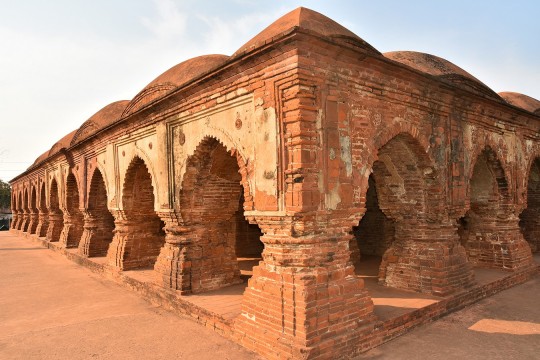
The Rasmancha is a heritage building located at Bishnupur, Bankura district, West Bengal.
Influence of the world on Bengal architecture: Although the Indo-Saracenic architectural style predominated in the area, Neo-Classical buildings from Europe were also present, particularly in or close to trading centers. While the majority of country estates had a stately country house, Calcutta, Dacca, Panam, and Chittagong all had extensive 19th and early 20th-century urban architecture that was equivalent to that of London, Sydney, or other British Empire towns. Calcutta experienced the onset of art deco in the 1930s. Indo-Saracenic architecture can be seen in Ahsan Manzil and Curzon Hall in Dhaka, Chittagong Court Building in Chittagong, and Hazarduari Palace in Murshidabad.

Hazarduari Palace in Murshidabad
The Victoria Memorial in Kolkata, designed by Vincent Esch also has Indo-Saracenic features, possibly inspired by the Taj Mahal. Additionally, Kolkata's bungalows, which are being demolished to make way for high-rise structures, have elements of art deco. The 1950s in Chittagong saw a continuation of Art Deco influences. The Bengali modernist movement, spearheaded by Muzharul Islam, was centered in East Pakistan. In the 1960s, many well-known international architects, such as Louis Kahn, Richard Neutra, Stanley Tigerman, Paul Rudolph, Robert Boughey, and Konstantinos Doxiadis, worked in the area.

The Jatiyo Sangshad Bhaban
This iconic piece of contemporary Bangladeshi architecture, was created by Louis Kahn. Midsized skyscrapers dominate the cityscapes of contemporary Bengali cities, which are frequently referred to as "concrete jungles." With well-known architects like Rafiq Azam, architecture services play a key role in the urban economies of the area. Overall Bengal architecture was influenced by various contemporaries of their time and continues to evolve.

Gothic architectural style seen in St. Paul's Cathedral in Kolkata.

Zamindar era buildings in ruin.

Belur Math in Howrah
#bengali#bangla#west bengal#bangladesh#tripura#assam#desi#বাংলা#india#architecture#tales#bengal architecture#history#kolkata#international#technology#information#temple#asia#bricks
192 notes
·
View notes
Text
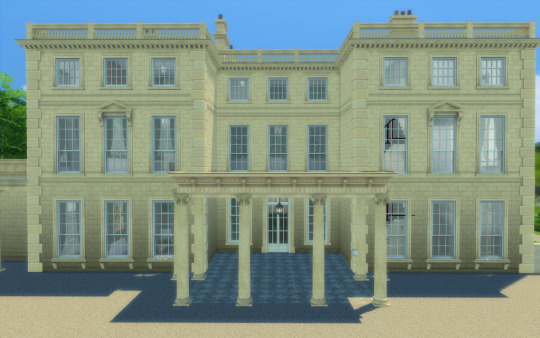
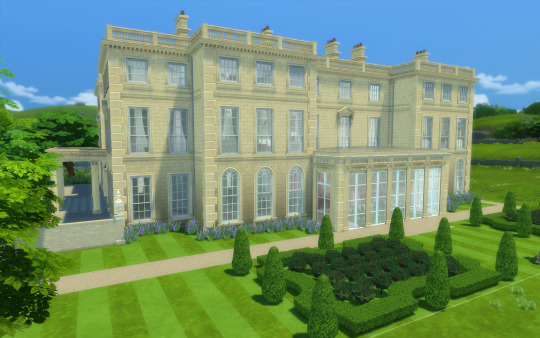

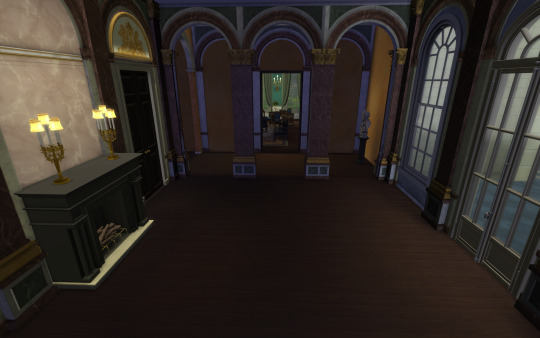
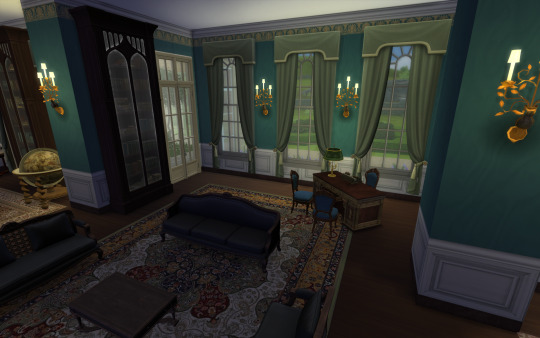




Prestwald Hall
Hi guys!!
I'm sharing Prestwald Hall . This is the 9th building for my English Manors Collection, and I will add many more!
House History: Prestwold Hall was, for many years, the seat of the Packe family. Before that time, it was the home of the Skipwith family. After the death of Major Robert Christopher Packe (born c.1783) - one time Aide-de-camp to King George III - who was killed during the Battle of Waterloo, the hall passed to his nephew George Hussey Packe who held the hall and estate until his death in 1874.
The Hall was remodelled by architect William Burn in 1842–1844, incorporating the fabric of a mid-18th-century H-plan house. It was Grade I listed in 1951.
One of the finest rooms inside the house is the Entrance Hall with its richly coloured marbled plaster work in the Italian style. The painted ceiling was inspired by Raphael’s Vatican grotesques and incorporates miniature landscapes, showing the house before and after its remodelling between 1842 and 1844. Below the ceiling, wreathing the room, are small medallion busts of the poets from Chaucer to Scott, positioned in the spandrels and are likely inspired by Alberti's external arcade at the Tempio Malatestiano in Rimini. An arcade opens on to a vaulted corridor leading to a top lit inner hall: these spaces also marbled. Off the corridor, the cantilevered stone staircase survives from the eighteenth century house, and was given its bracketed brass balusters by William Wilkins (1751-1815) in 1805.
The Dining Room, added by Wilkins in 1805, was incorporated into the remodelling undertaken by the Scottish architect William Burn in 1842. The room is overlooked by two dramatic full length portraits of Sir Edward Hussey Packe, KBE (1878 – 1946) and the Hon. Lady Mary Sydney Packe (née Colebrooke, 1890 – 1973) by the painter Glyn Philpot RA (1844 – 1947). The portrait of Lady Packe, painted in 1911, was described by the art historian Robin Gibson OBE as an ‘amazing feat of virtuosity’. Its elongated elegance and introspective characterisation is totally without the fashion-plate vulgarity of much Edwardian portraiture. Other portraits hang in this room of the Packe family including a painting of Sir Christopher Packe (1595 – 1682) who purchased the house in the 17th century painted by Cornelis Janssens van Ceulen (1593 –1661).
The library extends nearly the entire length of the house when the large doors that separate it from the drawing room are opened, connecting the two rooms. With clever use of constructional steel, William Burn was able to create these long adjoining rooms. The windows rise from floor level and open onto the garden which enhances the notion that Prestwold was designed in the style of an Italian classical villa. The doors and bookcases in library were made for George Hussey Packe (1846–1908) by Gillows of Lancaster and London in 1875.
A conservatory fills the recessed central bay at the front of the house, and projects out towards the garden. Behind the glass and elegant Doric pilasters, are well planted raised beds with a number of exotic plants and flowers
More history: https://en.wikipedia.org/wiki/Prestwold_Hall
Virtual tour: https://www.prestwold-hall.com/virtual-tour/
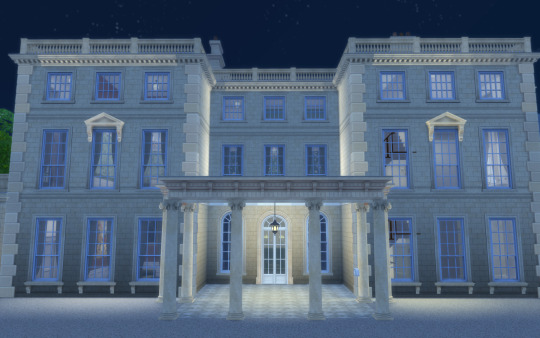
Night pics

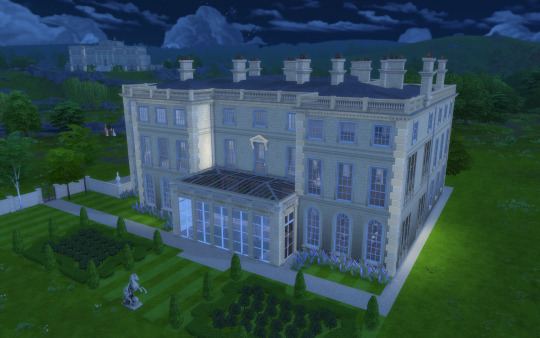
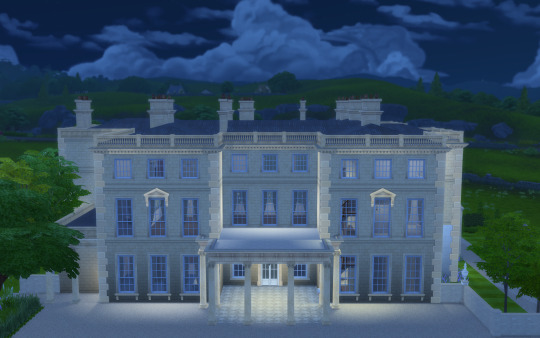

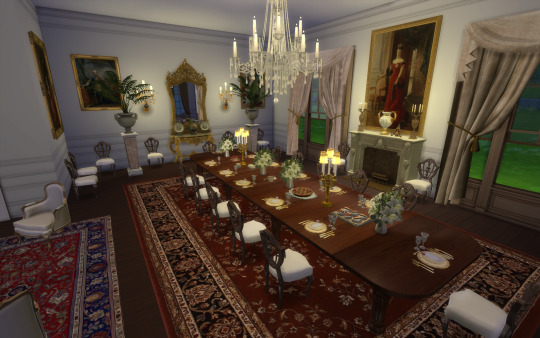
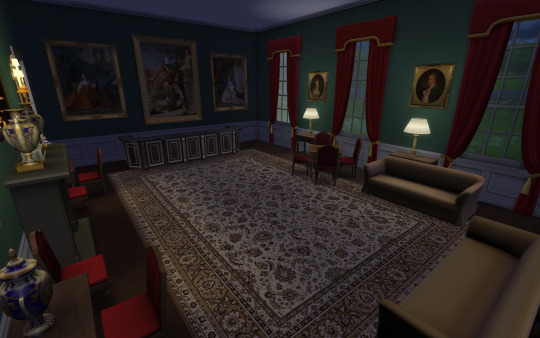
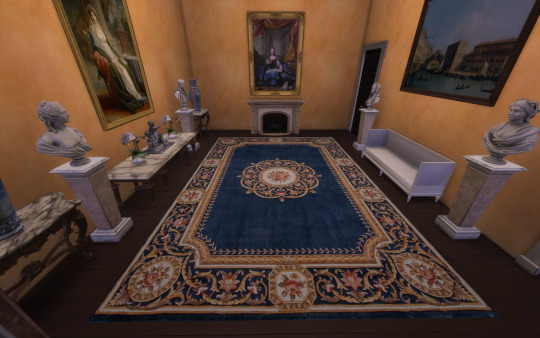

Floorplans

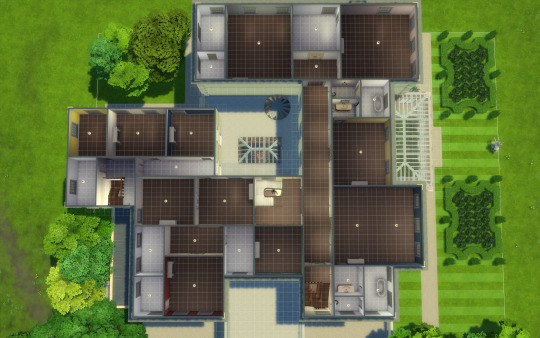
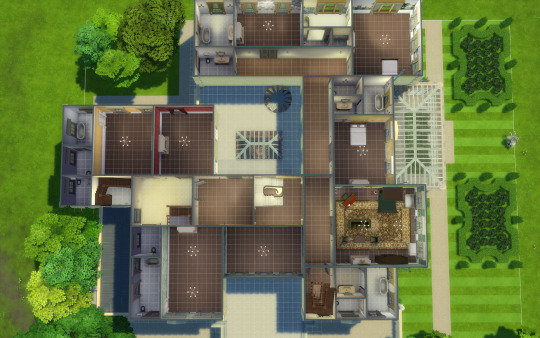
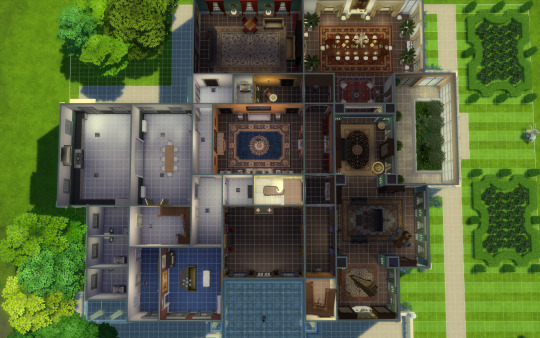
This house fits a 50x40 lot and features the following:
great hall
long Library
formal dinning room
family room
playroom
formal gallery
a winter garden
14 rooms for family/guests + 3 service rooms
several bathrooms
This time I decorated most of the rooms in the main floor for picture purposes, but as allways, you can make it your own!
The second and third floor (bedrooms) are not decorated, but finished.
Hope you like it.
You will need the usual CC I use:
all Felixandre cc
all The Jim,
SYB
Anachrosims
Regal Sims
King Falcon railing
The Golden Sanctuary
Cliffou
Dndr recolors
Harrie cc
Tuds
Lili's palace cc
Please enjoy, comment if you like it and share pictures with me if you use my creations!
Early Access: August 15
Download: https://www.patreon.com/posts/prestwald-hall-104505183
#sims 4 architecture#sims 4 build#sims4#sims 4 screenshots#sims4play#sims 4 historical#sims4building#sims4palace#sims 4 royalty#ts4 download#sims4frencharchitecture#ts4#ts4 gameplay#ts4 simblr#ts4 legacy#ts4cc#the sims community#the sims 4#sims 4
38 notes
·
View notes
Text
How reputation Reinvented Taylor Swift’s Persona, Part 2
Hi everyone, I hope you’re having a good week so far!
For this week’s post, I’m back with an update on my research pre-project about Taylor Swift’s reputation album. I will discuss other sources I’ll use to answer my research question: How did Taylor Swift use her album reputation to redefine her persona and reclaim control over her image?
As I’ve mentioned in my last post, reputation marked a major reinvention for Taylor Swift, allowing her to respond to public criticism and shift her public image. To support my analysis, I decided to include several new primary sources that highlight her transformation:
The music video for “...Ready For It?”, reflecting Taylor Swift’s new persona through dark and bold images.
The fact that she avoided traditional media tours and interviews, allowing the album to speak for itself (I’m not sure if it can be counted as a primary source, though).
The secret shows she held for her fans, helping her connect intimately with her audience and reinforce their support.
The interview she gave to Zane Lowe in 2019, in which she discusses her artistic evolution during the reputation era.
Her interview with Rolling Stone (2019), where she describes reputation as “a love story in amongst chaos,” a quotation that explains her blend of self-assertion and vulnerability during this period.
The “Making of a Song” series, which provides an intimate look into her creative choices. If I can’t access the “Look What You Made Me Do” episode (I’m currently struggling to find it), I will use the “I Did Something Bad” or “This Is Why We Can’t Have Nice Things” episodes to show that she chose not to let others define her persona.
My secondary sources will include Sydney Risher’s thesis “Look What You Made Me Do: A Rhetorical Analysis of Taylor Swift’s Persona”, since Risher analyzes how reputation acts as a calculated response to the “cancel culture” Taylor Swift faced. I will also use Richard Dyer and Paul McDonald’s book Stars (I’m still waiting on its arrival!) to look at how public personas are both authentic and constructed.
I’ll also use key concepts from Keith Negus’ book, focusing on "Identities", "Audiences" and "Mediation". The "Identities" chapter will help me discuss how Taylor Swift reinvented her public identity and portrayed multiple roles (from vengeful to vulnerable). I’ll also analyze the role of her active fanbase in shaping her image. The "Mediation" chapter will allow me to discuss how Taylor Swift’s visuals and sounds reinforce her powerful persona, and how the repetition of her music videos encourages new interpretations.
Thanks again for reading, and as always, feel free to share any thoughts or suggestions. I’m looking forward to reading your comments :)
Lucile
youtube
9 notes
·
View notes
Text
Elevate Your Outdoor Living with Sydney Design & Landscape Creations 🌿🏡
Transforming your outdoor space into a beautiful oasis is not just a dream; it's our passion at Sydney Design & Landscape Creations! With over 20 years of experience in landscape design and construction, we specialize in creating stunning outdoor environments tailored to your lifestyle. Whether you desire a serene garden, a functional outdoor living area, or driveways in Sydney that enhance your home's curb appeal, we've got you covered! 🌟
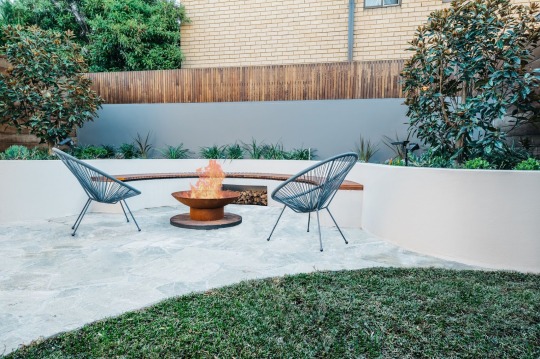
About Us 🌱✨
At Sydney Design & Landscape Creations, we pride ourselves on our expertise and commitment to quality. Our skilled in-house team manages every aspect of your outdoor project, from design to construction. By minimizing the need for outside contractors, we ensure a seamless and efficient delivery process. This hands-on approach allows us to maintain high standards of craftsmanship and uphold our promise of excellence in every project.
We understand that every client has a unique vision for their outdoor space, and our mission is to bring that vision to life. Our extensive portfolio showcases a variety of successful projects, including:
Timber Decking: Create a beautiful space for entertaining or relaxing.
Pergolas: Add shade and elegance to your garden.
Pool Transformations: Enhance your pool area with stunning landscaping and stylish glass fencing.
Our Services 🌟🔨
1. Landscape Design & Construction 🏗️🌼
We offer comprehensive landscape design services that encompass everything from initial concept development to the final construction. Our team works closely with you to design a layout that reflects your taste and complements your home.
2. Timber Projects 🪵
Decking: Our timber decks are crafted to provide a beautiful, functional space that withstands the test of time.
Pergolas: Custom-designed pergolas add both style and shade to your outdoor areas.
Seating: Enjoy your garden with our bespoke seating solutions, perfect for relaxation and gatherings.
3. Pool Landscaping & Glass Fencing 🏊♂️✨
Transform your pool area into a stunning retreat with our landscaping services. We specialize in:
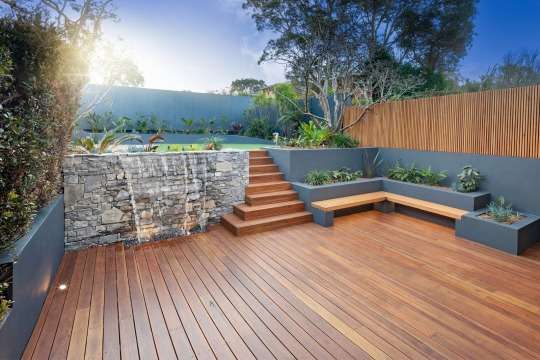
New Landscaping: Enhance your poolside with beautiful plants and features.
Glass Fencing: Our sleek glass fencing options provide safety without sacrificing style.
4. Driveways Sydney 🚗
Looking to enhance your home's entryway? Our driveways in Sydney are designed for durability and aesthetic appeal. Whether you prefer traditional or modern styles, our team will create a driveway that complements your home's design while providing functionality.
Our Mission 💪🌍
At Sydney Design & Landscape Creations, our mission is to design and build outdoor spaces that inspire and delight. We are dedicated to creating sustainable landscapes that not only look great but also contribute positively to the environment. Our commitment to quality and customer satisfaction drives everything we do.
We believe that a well-designed outdoor space can improve your quality of life, providing a peaceful retreat from the hustle and bustle of everyday life. Our goal is to make your outdoor dreams a reality, ensuring that every detail aligns with your vision.
Why Choose Sydney Design & Landscape Creations? 🤔🌿
Choosing the right landscaping company is crucial for achieving the outdoor space of your dreams. Here’s why Sydney Design & Landscape Creations stands out:
1. Experience You Can Trust 🧠🔨
With over two decades in the industry, we have the expertise needed to handle projects of all sizes and complexities. Our skilled team knows how to deliver results that exceed your expectations.
2. In-House Management 👷♂️👷♀️
We manage every aspect of your project, which means fewer delays and higher quality. You can trust that your outdoor space is in capable hands.
3. Warranty & Maintenance 💯🔧
We stand by our work with a 6-year warranty on all services. Plus, we offer ongoing maintenance for timber, stone, and garden areas to ensure your landscape remains stunning for years to come.
4. Customized Solutions 🛠️💡
Every outdoor space is unique, and we tailor our services to meet your specific needs and preferences. Our personalized approach guarantees that your vision is at the forefront of the design process.
Conclusion 🌟🌿
Transforming your outdoor space is within reach with Sydney Design & Landscape Creations! Whether you’re looking for stunning driveways in Sydney, custom timber projects, or beautiful pool landscapes, our team is ready to bring your vision to life. With our experience, commitment to quality, and personalized service, we are your go-to landscaping partner.
Ready to elevate your outdoor living? Contact us today, and let's create the perfect outdoor oasis together! 🌿
3 notes
·
View notes
Text


Meet Bungle!
Pronouns: He / Him
Once a Nomad that traveled the realms in his youth, he eventually ventured to The Sky Kingdom to join the construction crew in helping with the developments of settlements as a means to make a living for himself.
One day, when a project took him to Prairie Peaks, he came across a rare gemstone only known in ancient records as Light Stones, and upon touching it, caused a great surge of energy to engulf his body and granted him powers only seen in The Enlightened.
A drawback to this power, however, was that it made him go blind, as his body couldn’t fully handle the immense power surging through him, so he has to wear a blindfold. Despite this, Tasman knew he was destined for greatness, and took him in to become a member of The Elders Council so he could learn to master his powers with the aid of a traveling shaman who suffered a similar fate; Imänat.
Although Bungle is naturally strong, the powers of the Light Stones makes him so powerful, it’s believed he could rival strength of King Resh himself, but accessing this power requires him to undergo severe stress, sometimes even falling unconscious and awakening a hidden, merciless warrior that takes vengeance upon those that drove him to release this power.
Despite being the youngest of the group, Bungle is a gentle giant with a heart full of compassion and care for his friends without concern of what others think about him.
Both Narmel and Sydney took a liking to Bungle’s gentle demeanor, but Perth quickly became best friends with him when he found someone of impressive strength that wasn’t a Elder. With Perth’s guidance to him using his strength when not around Imänat, these two are nearly inseparable.
Those who bring harm to his friends will soon meet his hidden ire, as he looses all concern of his wellbeing in favor of the safety of those he cares about.
#sky children of the light#sky cotl#that sky game#sky#melbourne#fyp#fypツ#tumblr fyp#character lore#lore dump#lore#oc lore#character bio#character backstory#backstory#my ocs#oc#ocs
6 notes
·
View notes
Text
D's D&D Recap: Session 1
Last night's session took the party into a mineshaft that had been overrun by a group of Kobolds, leading to a few unexpected discoveries, and a sizeable reward.
The Party's first challenge was figuring out how to navigate the space. Cramped. Tight. And dark. And only half of them had Darkvison.
Through a few clever uses of the Light cantrip, and a few moments of stealthy scouting by party members with Darkvison, the party discovers large quantities of radioactive ore present within the mine, as well as a group of Kobolds, bickering amongst themselves about their leader, a figure known to the Kobolds as "Glowee".
After stealthily dispatching them, the party continued further into the mine, uncovering a corpse, hidden deep in the mines, grievously wounded and swollen from what appears to be some sort of allergic reaction. It is unknown what caused the swelling, but the Kobolds they had just defeated had been armed with Love scorpions tied to the end of sticks, suggesting the body may have been repeatedly stung to death by an overwhelming number of creatures. The party finds a few valuables on the body (a pair of enchanted goggles and a Handy Haversack containing multiple precious gems stones, holding a value vastly more substantial than the reward they're expecting from their pest control)
During this search, the artificer confronted one group of kobolds, offering them a peaceful opportunity to return the stolen Ore and flee. Though initially intimidated by the artificer, this confrontation ultimately led to the quick and effective slaughter of this group of kobolds.
Finally, they managed to locate the area of the mine where the kobold incursion occured, and discovering Glowee, a heavily irradiated and glowing Kobold, who had been feeding harvesting moss that was grown on the radioactive ore, and feeding it to his followers. After setting a cunning trap, and luring the kobolds over a series of caltrop, the party was able to defeat the remaining members of Glowees tribe.
After packing the kobold bodies up into a mine cart, and collecting their payments, it is discovered that the orders that lead to the breach within the mine had been forged, and that someone had intentionally sabotaged the drilling equipment. Following a brief investigation (and a few instances of intimidating the miners) it's discovered that the body found in the mine was that of Sydney, a kindly old miner who was killed when the kobolds breached the mines. His body was hidden during the escape, so as to avoid an investigation, and to allow for someone else to take responsibility for a minor workplace accident as opposed to the whole quarry being under investigation for manslaughter.
Following a series of confessions, justice is served, and the party returned to their rooms in the local tavern, having collected over 1,750gp worth of valuables, and enough "repossessed" metal Ore to begin construction of their Spelljamming ship.
6 notes
·
View notes
Text
The story of Richard and Mildred Loving, an interracial couple, whose challenge of their anti-miscegenation arrest for their marriage in Virginia led to a legal battle that would end at the US Supreme Court. Credits: TheMovieDb. Film Cast: Richard Loving: Joel Edgerton Mildred Loving: Ruth Negga Grey Villet: Michael Shannon Sheriff Brooks: Marton Csokas Bernie Cohen: Nick Kroll Frank Beazley: Bill Camp Lola Loving: Sharon Blackwood Raymond Green: Alano Miller Garnet Jetter: Terri Abney Judge Bazile: David Jensen Phil Hirschkop: Jon Bass Theoliver Jeter: Christopher Mann Musiel Byrd-Jeter: Winter-Lee Holland Deputy: Michael Abbott Jr. Percy Fortune: Chris Greene Virgil: Will Dalton Chet Antieau: Matt Malloy Laura: Andrene Ward-Hammond Alex: D.L. Hopkins Hope Ryden: Jennifer Joyner Cousin Davis: Lance Lemon Cousin Gerald: Marquis Adonis Hazelwood Older Sydney: Brenan Young Older Donald: Dalyn Cleckley Older Peggy: Quinn McPherson Middle Sidney: Jevin Crochrell Middle Donald: Jordan Williams Jr. Middle Peggy: Georgia Crawford Toddler Sydney: Micah Claiborne Baby Sydney: Devin Cleckley Infant Sydney: Pryor Ferguson Clara – Cashier: Karen Vicks Reporter #1: Scott Wichmann Construction Worker: Benjamin Loeh Court Secretary: Bridget Gethins Store Pedestrian: Mark Huber Drag Race Spectator: James Matthew Poole Secretary: Coley Campany Secretary: Sheri Lahris Construction Worker: Jordan Dickey Telephone Man: Coby Batty Drag Race Spectator / Bar Patron: Chris Condetti Richard’s Racing Crew: Logan J. Woolfolk County Clerk: Robert Haulbrook Bricklayer: Keith Tyree Spectator: James Nevins Prisoner: W. Keith Scott Photojournalist: Tom Lancaster Street Walker: Lonnie M. Henderson Court Audience Member: Brian Thomas Wise Drag Race Spectator: Ken Holliday Antieau’s Secretary: Terry Menefee Gau Driver: Marc Anthony Lowe Racetrack Spectator: Jay SanGiovanni D.C Teen: Tyrell Ford Baby Boy #1: James Atticus Abebayehu Phil’s Dad: Jim D. Johnston …: Derick Newson Boarding House Boy: Miles Hopkins Construction Worker: Kenneth William Clarke Reporter: Robert Furner Secretary: Victoria Chavatel Jimison Field Hand / Drag Strip Attendee / Shot Gun Shack Attendee (uncredited): Darrick Claiborne Courtroom Spectator (uncredited): Raymond H. Johnson Drag Race Driver: Dean Mumford Pregnant Girl: Rebecca Turner Magistrate: Mike Shiflett County Jailer: Greg Cooper Supreme Court Reporter: A. Smith Harrison Press Conference Reporter: Keith Flippen Soundman: Jason Alan Cook Courtroom Spectator (uncredited): Lucas N. Hall Film Crew: Director: Jeff Nichols Editor: Julie Monroe Producer: Peter Saraf Executive Producer: Jack Turner Executive Producer: Jared Ian Goldman Executive Producer: Brian Kavanaugh-Jones Unit Production Manager: Sarah Green Art Direction: Jonathan Guggenheim Casting: Francine Maisler Production Design: Chad Keith Storyboard: Nancy Buirski Associate Producer: Oge Egbuono Producer: Colin Firth Producer: Marc Turtletaub Set Decoration: Adam Willis Producer: Ged Doherty Unit Production Manager: Will Greenfield Costume Design: Erin Benach Music Supervisor: Lauren Mikus Original Music Composer: David Wingo Still Photographer: Ben Rothstein Director of Photography: Adam Stone Script Supervisor: Jean-Paul Chreky Special Effects Coordinator: Gary Pilkinton Special Effects Technician: Trevor Smithson Property Master: A. Patrick Storey First Assistant Director: Cas Donovan Second Assistant Director: Tommy Martin Stunt Driver: Dean Mumford Key Makeup Artist: Katie Middleton Second Second Assistant Director: Ben LeDoux Construction Buyer: Roslyn Blankenship Assistant Property Master: Hannah Ross Dialogue Editor: Brandon Proctor Genetator Operator: Maxwel Fisher Post Production Supervisor: Susan E. Novick Boom Operator: Proctor Trivette Leadman: Stephen G. Shifflette Second Assistant “A” Camera: Stephen McBride Sound Effects Editor: David Grimaldi Foley Mixer: Judy Kirschner Makeup Department Head: Julia Lallas Hairstylist: Brian Morton Sound Effects Editor: Joel Dougherty ADR Mixer: Chris Navarro Sound Effects Editor: P.K. Hooker ...
#biography#civil rights#court#interracial couple#interracial marriage#interracial relationship#Marriage#supreme court#Top Rated Movies#virginia
2 notes
·
View notes
Text
Core Drilling Sydney for Concrete Floors, Staircases, and Lift Shafts
When creating precise openings in concrete floors, staircases, or lift shaft installations, core drilling in Sydney is an indispensable tool in the construction industry.
Whether you're a contractor, architect, or property owner, understanding the nuances of core drilling can help you make informed decisions for your project. We'll explore what core drilling services entail, their applications, and why they are critical for projects requiring concrete floor openings, staircases, and lift shaft openings.
What is Core Drilling?
Core drilling is a specialised service to create precise circular cuts or holes in concrete, stone, asphalt, and other solid materials. Unlike conventional drilling, core drilling uses a hollow, cylindrical drill bit, usually embedded with diamond or other hard materials, to cut through the concrete. This method ensures clean, precise openings without causing structural damage to the surrounding areas.
Applications of Core Drilling
Concrete Floor Openings: Core drilling is ideal for creating holes for plumbing, electrical, and HVAC installations in concrete floors. It's precise and minimises the need for extensive repairs or alterations.
Staircases and Lift Shaft Openings: In multi-story buildings, core drilling is crucial for creating openings for staircases and lift shafts. Its precision ensures that these critical elements align perfectly across different levels.
Utility Installations and Upgrades: For installing or upgrading utilities such as water, gas, and sewer lines, core drilling provides a non-invasive method to create necessary pathways.
Advantages of Core Drilling Services
Precision and Accuracy: Core drilling offers unmatched precision, making it possible to create holes of exact diameters and depths, essential for complex projects.
Minimal Noise and Vibration: Core drilling generates less noise and vibration than traditional drilling methods, making it ideal for occupied buildings or sensitive environments.
Dust and Debris Control: Core drilling services often include dust extraction systems, minimising the mess and ensuring a cleaner work environment.
Structural Integrity Maintenance: The technique is non-percussive, meaning it doesn't compromise the structural integrity of the concrete during the drilling process.
Choosing the Right Core Drilling Service Provider
Selecting a competent core drilling service provider is crucial for the success of your project. Consider the following:
Experience and Expertise: Look for a provider with a proven track record in handling similar projects.
Equipment Quality: Ensure the provider uses high-quality, well-maintained drilling equipment.
Safety Standards: The provider should adhere to strict safety standards to ensure the well-being of their workers and your property.
Flexibility and Reliability: Choose a service that can adapt to your project's specific needs and timelines.
Preparing for Core Drilling
Before the core drilling process begins, it's important to prepare the site:
Site Assessment: Conduct a thorough site assessment to identify potential hazards or obstacles.
Marking the Drilling Points: Clearly mark where the holes are to be drilled to ensure accuracy.
Utility Mapping: Check for any underlying utilities to avoid accidental damage.
Conclusion
Core drilling services are vital in modern construction, especially for projects requiring precision to create concrete structure openings. Understanding its applications, benefits, and factors to consider when choosing a service provider ensures that your project proceeds smoothly, safely, and efficiently.
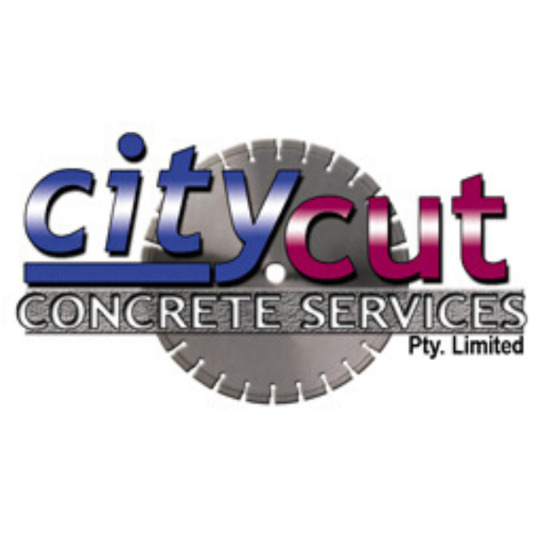
With the right core drilling Sydney partner, you can confidently tackle any project, whether installing a new staircase, creating lift shaft openings, or any other construction endeavour involving concrete.
2 notes
·
View notes
Text
Transforming Outdoor Spaces with Expert Landscape Construction in Eastern Suburbs

Creating a beautiful, functional outdoor space requires skill, planning, and high-quality materials. Whether you’re looking to build a serene garden retreat or a stylish entertainment area, professional landscape construction in Eastern Suburbs can enhance your property’s aesthetic appeal and value. From stone pathways and retaining walls to decking and water features, the correct landscaping elements bring harmony between nature and architecture.
This guide explores key aspects of landscape construction, popular features, factors to consider before starting a project, and how to choose the right professionals for the job.
1. Key Elements of Landscape Construction
1.1 Hardscaping for Structure and Functionality
Hardscaping refers to non-living elements in landscaping, such as:
Retaining walls to prevent soil erosion and add dimension.
Paved pathways and driveways for accessibility and aesthetics.
Outdoor seating areas and patios for relaxation and entertainment.
1.2 Softscaping to Enhance Natural Beauty
Softscaping includes all the living components, such as:
Turf and lawn installation for a fresh, green outdoor area.
Garden beds and plant selection suited to Sydney’s climate.
Shrubs and hedges for privacy and shade.
1.3 Water Features and Sustainable Solutions
Incorporating water features such as fountains, ponds, or waterfalls creates a tranquil ambience. Sustainable solutions like rainwater harvesting systems and native plant landscaping help conserve resources.
2. Popular Landscape Construction Features in Eastern Suburbs
2.1 Decking and Pergolas
Wooden or composite decks extend the living space, while pergolas provide shade and architectural interest.
2.2 Outdoor Kitchens and Fire Pits
Perfect for entertaining, an outdoor kitchen with a built-in BBQ and seating area adds functionality and value to a home. Fire pits create warmth and a cosy atmosphere for year-round outdoor use.
2.3 Garden Lighting and Irrigation Systems
Strategic lighting enhances pathways, trees, and feature walls, while automated irrigation systems keep plants healthy with minimal effort.
3. Factors to Consider Before Starting a Landscape Construction Project
3.1 Budget and Planning
Define your project scope, prioritise features, and establish a budget to avoid overspending.
3.2 Climate and Materials
Sydney’s coastal climate influences material choices; weather-resistant timber, natural stone, and durable pavers ensure longevity.
3.3 Council Regulations and Approvals
Some projects, such as retaining walls and large-scale landscaping, may require council permits. Check with local authorities before commencing work.
4. Choosing the Right Landscape Construction Professionals
4.1 Experience and Expertise
Look for landscapers with a proven portfolio of completed projects in the Eastern Suburbs.
4.2 Client Reviews and Recommendations
Testimonials and word-of-mouth referrals help gauge service quality and reliability.
4.3 Sustainable Practices
Choose professionals who incorporate eco-friendly solutions, such as water-efficient landscaping and native plant choices.
5. Conclusion: Elevate Your Outdoor Space with Expert Landscape Construction
Investing in landscape construction in Eastern Suburbs enhances curb appeal, functionality, and property value. Whether it’s a modern courtyard, lush garden, or an entertainer’s dream backyard, thoughtful design and expert craftsmanship ensure long-lasting beauty. Work with experienced professionals to create an outdoor space that complements your lifestyle and home.
0 notes
Text
Abbotsbury's Finest Stonemasons for Your Custom Projects
Abbotsbury is a charming village nestled on the Jurassic Coast in Dorset, renowned for its rich history and stunning architecture. A key element that brings timeless beauty to the structures in this area is the skill and expertise of Stonemasons Abbotsbury. Whether you’re restoring a historical landmark or building a bespoke feature for your property, stonemasons in this picturesque village are…
#Commercial Stone Construction Dulwich Hill#Domestic Stone Construction Dulwich Hill#Industrial Stone Construction Dulwich Hill#Retaining Walls in Dulwich Hill#Sandstone Paving Dulwich Hill NSW#Stone Construction Dulwich Hill#Stone Construction Sydney#Stonemasons Abbotsbury#Stonemasons in Abbotsbury#Stonemasons in Dulwich Hill#Stonemasons Services in Sydney
0 notes
Text
Why Choose Hybrid Flooring In Sydney For Your Home?

If you're renovating your home or updating your floors, hybrid flooring in Sydney is a popular choice that combines the best of laminate and vinyl. Known for its durability, water resistance, and stylish designs, hybrid flooring is a versatile option for any room. But why is it so popular in Sydney homes? Let’s explore the benefits, styles, and tips for selecting the perfect hybrid flooring.
What Makes Hybrid Flooring Unique?
Hybrid flooring stands out because of its innovative design and versatility. Here’s why:
Durable Construction:
A blend of rigid core technology and multiple layers ensures long-lasting performance.
Water Resistance:
Perfect for kitchens, bathrooms, and laundry rooms, hybrid flooring is entirely waterproof.
Realistic Aesthetics:
Modern designs mimic the natural beauty of hardwood or stone.
Low Maintenance:
Easy to clean and resistant to scratches, it’s ideal for busy households.
Eco-Friendly Options:
Many brands use sustainable materials, making it a greener flooring choice.
Why Is Hybrid Flooring Popular in Sydney Homes?
Sydney homeowners often choose hybrid flooring for its adaptability to the local climate and lifestyle.
Climate Compatibility:
Withstanding Sydney’s fluctuating temperatures and humidity, hybrid flooring resists warping and swelling.
Modern Aesthetics:
Its sleek appearance fits seamlessly into Sydney’s contemporary and coastal home designs.
Cost-Effective:
Hybrid flooring offers a high-end look without the premium price tag of hardwood or tiles.
Pet and Kid-Friendly:
Its scratch resistance and durability make it ideal for active families.
Installation Flexibility:
Hybrid flooring can be installed over most existing floors, saving time and effort.
How to Choose the Right Hybrid Flooring for Your Sydney Home
To find the perfect hybrid flooring, keep these factors in mind:
Design Preferences:
Decide between wood-look or stone-look options to suit your home’s interior.
Room Usage:
Opt for thicker, more durable planks in high-traffic areas.
Core Material:
Choose between stone plastic composite (SPC) or wood plastic composite (WPC) for different levels of resilience.
Colour Scheme:
Neutral tones like greys and whites complement modern designs, while warmer hues suit traditional homes.
Warranty:
Ensure the flooring comes with a reliable warranty to guarantee long-term quality.
How to Maintain Hybrid Flooring
Keep your hybrid flooring looking great with these simple tips:
Regular Cleaning:
Sweep or vacuum regularly to remove dirt and debris.
Avoid Harsh Chemicals:
Use a damp mop with mild cleaning solutions to preserve the surface.
Protect from Furniture:
Use pads under furniture legs to prevent scratches.
Control Moisture:
While hybrid flooring is waterproof, cleaning up spills promptly prevents damage.
Where to Find Quality Hybrid Flooring in Sydney
Sydney offers plenty of options for high-quality hybrid flooring:
Local Showrooms:
Visit flooring retailers to explore samples and compare finishes.
Online Stores:
Check out e-commerce platforms for convenience and variety.
Home Improvement Centres:
Stores like Bunnings offer hybrid flooring options and installation services.
Specialist Flooring Companies:
Experts can help you choose and install the perfect flooring for your needs.
Conclusion
Whether you’re updating your living room, kitchen, or bathroom, hybrid flooring in Sydney is an excellent choice for its durability, water resistance, and stylish appeal. With so many designs and options available, hybrid flooring fits perfectly into Sydney’s diverse architectural styles. Start exploring your options today and transform your space with this versatile flooring solution!
0 notes
Text
The Beauty and Versatility of Stone Products in Sydney
Sydney, with its stunning architecture and natural landscapes, is a city that beautifully blends urban sophistication with earthy aesthetics. Among the numerous elements contributing to this city’s charm, Stone Products Sydney stands out as a cornerstone of construction, design, and landscaping projects. Whether you’re building a home, revamping your garden, or designing commercial spaces,…
0 notes
Text
0 notes
Text
Why Choose Zero Silica Engineered Stone for Your Sydney Home?
In recent years, the demand for sustainable and health-conscious materials in construction and design has soared. Among these materials, Zero Silica Engineered Stones in Sydney has emerged as a game-changer. Combining functionality, safety, and aesthetics, this engineered stone offers homeowners and builders a superior alternative to traditional materials. Here’s why you should consider it for…
#Engineered Stone Sydney#Zero Silica Engineered#Zero Silica Engineered Stone#Zero Silica Engineered Stone Sydney#Zero Silica Stone#Zero Silica Stone Sydney
0 notes
Text
Why Built-In Wardrobes Are the Perfect Storage Solution for Sydney Homes
In Sydney especially, people mostly live in small houses and therefore when designing their houses, they have to consider space and how to overcome it for efficient use. Custom fitted closets are not only a stylish but wise addition to your house that optimizes utility and style of your living space. Built-in wardrobes are perfect for your home because they are made to blend and coordinate with the rest of the furniture in your house and help eliminate clutter.
This is why built-in wardrobes are the best home furniture storage solution in Sydney.
Flexibility in Order to Fit Either Your House or Office filthy.
The main advantage of having built-in wardrobes is the fact that they can be designed in the space that is available rather than the other way round. At the same time, built-in wardrobes are more versatile than freestanding wardrobes, which are available only in specific dimensions predefined by the producers.
Maximizing Space: In this fashion, built-in wardrobes are designed to take advantage of each available square inch right starting with the height of the room. This is especially desirable in Sydney homes where space has to be optimally utilized to fit everybody’s needs.
Tailored Storage: It also means that when you are in need of more hangers, shelves for folded clothes, or shelves for shoes and accessories, built-in wardrobes can be designed to add space that you have.
Perfect for Awkward Spaces: Built-in wardrobes work very well for irregular shaped rooms, starting with sloping ceilings, alcove, or any other types of irregular shapes. built in wardrobes sydney
Enhancing Aesthetic Appeal
These built in wardrobes go beyond the realm of functional furniture and give a proper touch of the interiors.
Wide Range of Finishes: The stone selections include type of materials, color and finish to match the exterior or interior of your home. The last two types of closets provided can have contemporary mirrored sliding doors, or a warm wooden door, or a completely glass door, or any other type.
Seamless Design: Floor mounted wardrobes are enclosed with your walls and thus offer a great appearance that matches all other walls hence making a great improvement of the looks of your house.
Versatile Door Options: While built-in wardrobes were designed as a single unit wardrobe with a single door opposite and sometimes running the entire length of the room, they have since developed a flexibility in their doors.
Kitchen in Small House Furnish Idea: Space Saving Solution
Sydney is a very populated city today, and this means that people get to live in quite tight areas. When it comes to design of small houses, built-in wardrobes can be rightly called a true wonder of space saving.
Sliding Doors: These do not require doors to be cleared thus suitable for.AddComponent fan: These remove the need of door clearances thus suitable for.LinearLayoutManager fan: These do not require then to be cleared for doors thus are useful for
Floor-to-Ceiling Storage: Since they can be designed to go from floor to the ceiling of a room, built-in wardrobes also offer other storage spaces for other things that are not used frequently, like seasonal clothes and suitcases.
Eliminating Clutter: There is order in the manner in which people sort their possessions, and built in wardrobes ensure that the home remains clean
Increasing Property Value
Fitted wardrobes can add great value to your home should you decide to move and need to sell your house.
Appeal to Buyers: This is how potential buyers in Sydney look for home solutions with good storage design. Fitted wardrobes are considered as a plus when it comes to the property in question.
Long-Lasting Investment: Pre-fitted closets are also strong, well-constructed fixtures which will continue to provide value for a long time in the future.
These features are greatly characterized by receiving and maintaining wear and tear over a long duration as well as being easy to maintain.
Fitted wardrobes are designed to be long wearing, lasting for many years.
High-Quality Materials: Custom wardrobesare made out of some of the most hard wearing substances around.
Easy to Maintain: Built-in wardrobes are easy to clean and maintain because they are less cumbersome and possess little and fewer joints.
Sustainable and efficient design in an aircraft is both a desirable engineering goal and a major component of the overall environmental strategy in air transportation.
In terms of green living, certain built-in wardrobes can be an environmentally friendly amenity to quality homeowners.
Sustainable Materials: Nowadays, numerous Sydney wardrobe companies use environment-friendly materials and different types of finishes.
Efficient Organization: Inasmuch as built- in wardrobes do not require other storage furniture, their construction leads to effective usage of resources.
It has been created that accommodates modern lifestyle.
Housesbuilt in wardrobesare intended for the needs of today’s life.
Integrated Features: Contemporary elements that are integrated in many of the modern designs are LED lighting, soft closing drawers and mirrors that are incorporated into the furniture. custom wardrobes sydney
Tech-Friendly Solutions: Some of the types of built-in wardrobes feature areas for charging gadgets and units for housing electronics.
Closets are not only useful and practical; they are in fact an integration of utility and aesthetics and affordability. These wardrobes are created for city’s compact apartments located in Sydney CBD or a large house in the suburbs without taking away too much space and does not interfere with the overall look and design of the house.
The flexibility in design, compact constructions and potential property enhancement features do make built-in wardrobes a satisfactory answer to Sydney homes needs. Welcome the concept of personalized storage and get a living area that will be not only organized but also attractive.
For more info visit here:- wardrobe design
0 notes